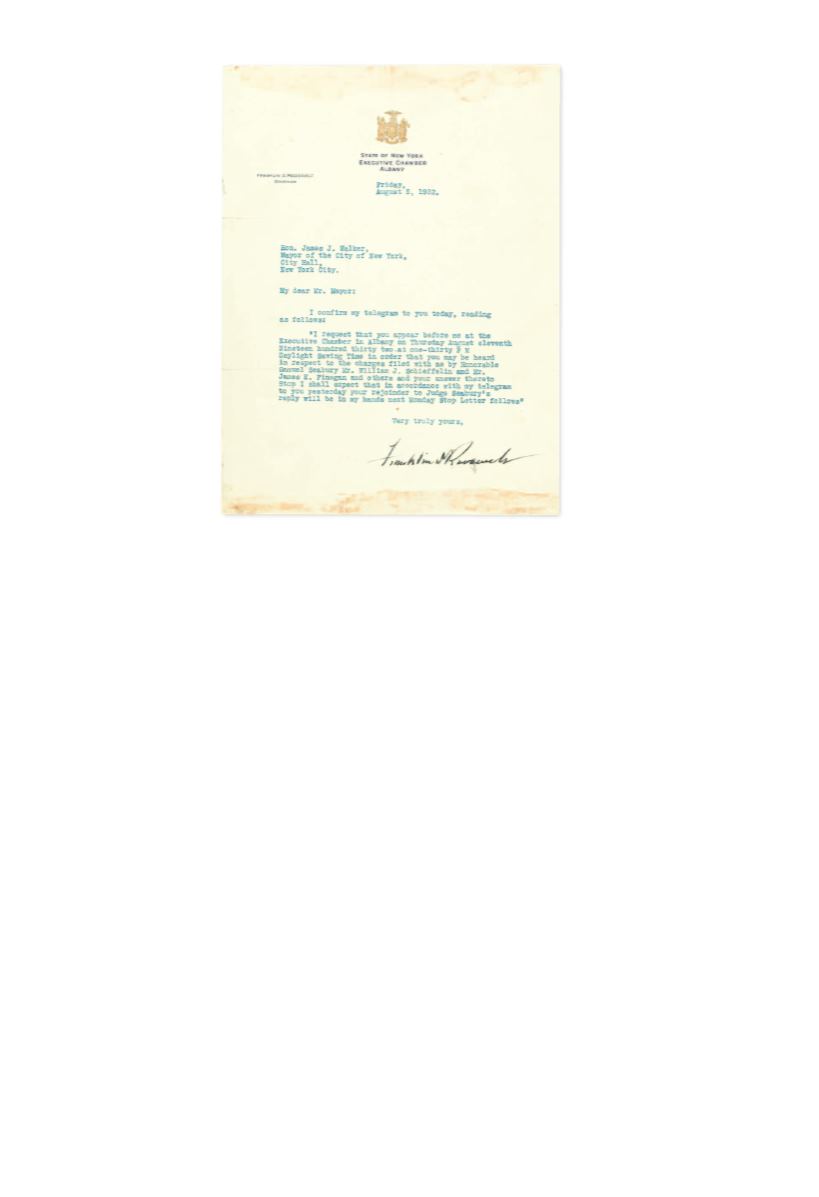

TO NYC MAYOR ACCUSED OF CORRUPTION:
“I REQUEST THAT YOU APPEAR BEFORE ME”
171
●
ROOSEVELT, FRANKLIN D. Typed Letter Signed, as Governor, to New York
City Mayor James J. Walker, confirming the telegram summoning him to a hearing in
Albany to answer to charges filed by Judge Samuel Seabury. 1 page, 4to, “Executive
Chamber” stationery; moderate staining along upper and lower edges verso from remnants
of prior mounting, minor smudging to signature, horizontal folds. (TFC)
Albany, 5 August 1932
[1,000/1,500]
“
. . . I request that you appear before me at the Executive Chamber in Albany on Thursday
August eleventh Nineteen hundred thirty two at one-thirty P M Daylight Saving Time in
order that you may be heard in respect to the charges filed with me by Honorable Samuel
Seabury . . . and others and your answer thereto . . . .”
On August 11, 1932, Mayor Walker appeared at a hearing arranged by Roosevelt acting as
the state’s Chief Magistrate to record Walker’s response to the corruption charges prepared by
Judge Samuel Seabury.Walker declared at the meeting that his over 20 years of political service
were blameless; nevertheless, on September 1, 1932,Walker resigned from office and left the
country.
WITH
—
The original telegram from FDR to MayorWalker, conveying the same message as that of
the letter in the present lot, with receipt time stamp at upper edge:“1932 AUG 5 PM 8 00.”
HIS ELECTION:“THE RESULTSWERE ALMOST OVERWHELMING”
172
●
ROOSEVELT, FRANKLIN D. Typed Letter Signed,
“F.DR,” as President-Elect,
with holograph postscript, to cousin Henry Latrobe Roosevelt (“Dear Harry”), thanking
him for congratulations and sending regards from himself and his wife. The holograph
postscript: “I do hope to see you / very soon.” 1 page, 4to, “Executive Mansion” stationery;
folds. (TFC)
Albany, 23 December 1932
[350/500]
“
I have been a long time writing to thank you for your awfully nice letter written after election.
The results were almost overwhelming. I do feel that the large plurality leaves me peculiarly free
in the development of plans and personnel for the coming four years. . . .”
171









